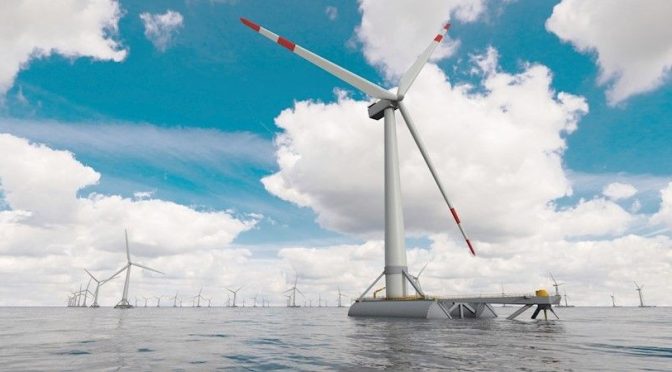The MooringSense consortium, a European project led by the CTC Technology Center, has reached the first two milestones that allow it to lay the foundations for defining a new management model for floating wind turbines, by means of which it aspires to reduce its maintenance and of operation for the generation of offshore wind energy by 15% and 10%, respectively.
The first two steps taken by the consortium have been to identify the main limitations and shortcomings presented by current technologies associated with the management of the integrity of the funding systems and to define the reference case of the project that allows evaluating the planned developments in a “realistic” manner. , as reported by MooringSense in a press release.
Six months after their launch meeting, the nine members of the consortium took stock of the progress made to date, which translates into eight reports that cover both technical and other aspects related to management, communication and communication processes. management of the “huge” amount of data to be generated in MooringSense.
This first follow-up meeting was scheduled at the Saitec facilities, although due to the health crisis caused by COVID-19, a series of meetings segmented by work packages have been held through videoconference.
Representatives of the entire consortium, made up of leading research centers such as the CTC Technology Center, TNO, Ikerlan and Synthe Ocean, have participated in these virtual meetings; and leading global companies such as Zunibal, Saitec, Bridon Bekaert Wire Rope Industry, Vicinay Marine Innovation and Intecsea.
Their work has led to a report that aims to be a consultation document for the floating wind industry, and which highlights the need to develop specific technologies and procedures for the anchoring systems used in floating wind turbines, to reduce costs. of operation and the risks of failure.
In response to the need for more efficient management, MooringSense will develop a new approach to managing the integrity of these systems. An advance that, in addition to significantly reducing operating costs, will also contribute to optimizing the current performance offered by floating wind energy and increase annual energy production by 2 to 3%.
This study has located the limitations and deficiencies that present solutions present, all of them coming from the oil and gas industry, for their application in a sector in full development. Thus, there are “reasonable doubts as to the robustness and reliability” offered by current monitoring systems applied to anchoring systems.
After updating the progress made in the project, the work to be carried out in the coming months has been coordinated and planned, which will especially focus on the definition of the architecture and the technical specifications that must be implemented in the innovative solution that MooringSense will offer.
Likewise, the procedures and metrics indicated for the validation of the developments will be specified and the numerical models that will be part of the Digital Twin will be studied in depth to obtain a digital replica of the floating wind turbine, as well as a series of tools that will allow behavior prediction and planning. proper maintenance work.
The next follow-up meeting for MooringSense, a project that has received funding from the EU’s Horizon 2020 research program, is scheduled for October.
In addition to analyzing the current situation in the sector, the MooringSense consortium has also defined the reference case that will be used to assess the impact of the proposed developments. The concept for floating platforms SATH (acronym for Swinging Around Twin Hull), property of the company Saitec, will serve as a reference for making these measurements.
For this, the size of the typical wind farm has been defined, the target sites with different environmental conditions have been established and several different anchoring configurations have been considered.


